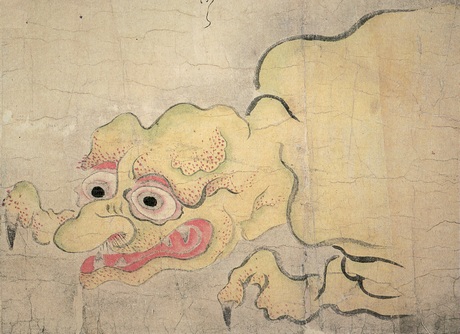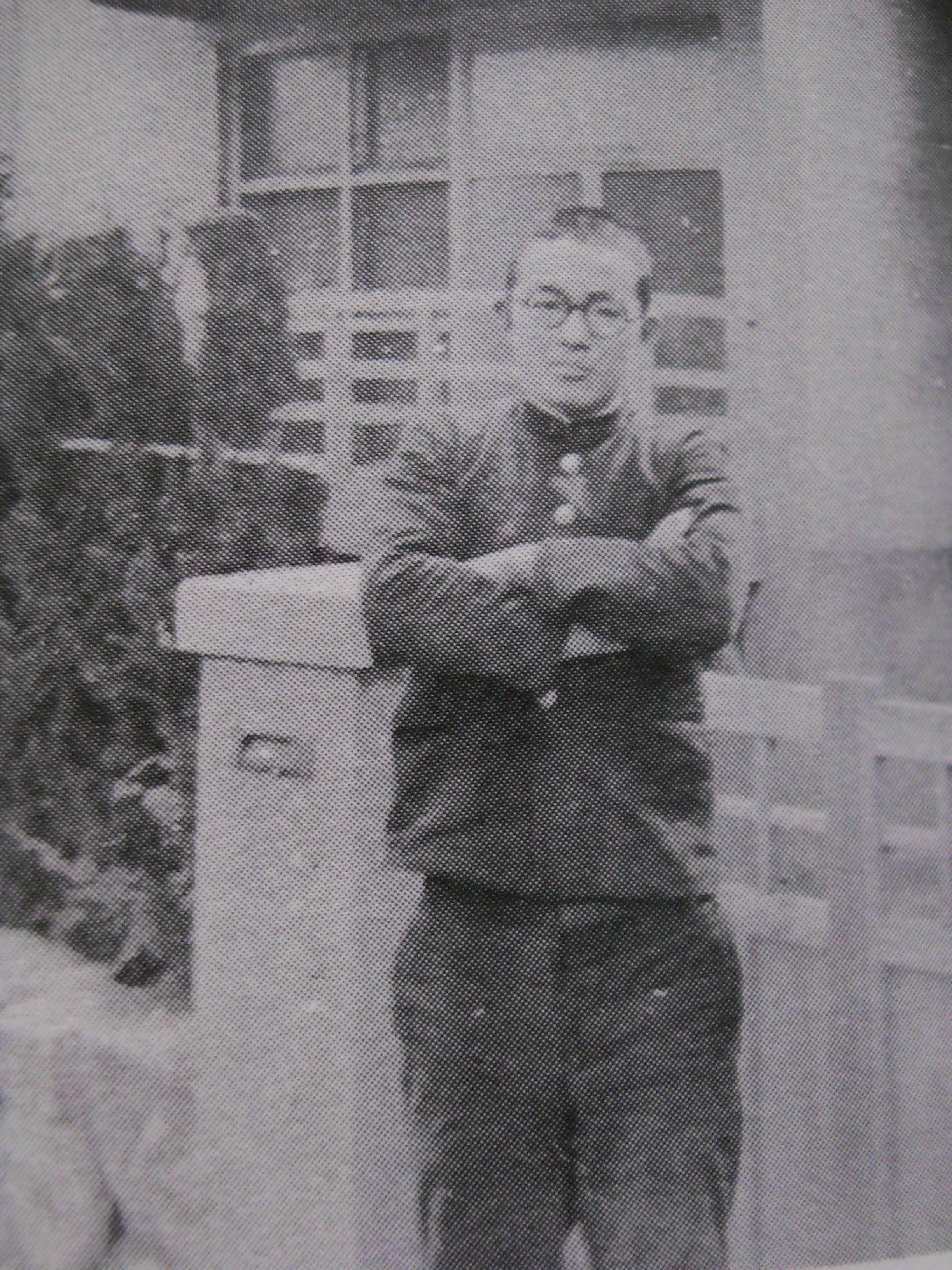|
Waira
The waira (わいら) is a Japanese yōkai from Japanese emaki such as the ''Hyakkai Zukan'' by Sawaki Suushi and the ''Gazu Hyakki Yagyō'' (1776) by Sekien Toriyama. Concept In the ''Hyakkai Zukan'' (1737, Sawaki Suushi), ''Bakemonozukushi'' (化物づくし) (artist and year unknown, owned by Rei Kagaya), the ''Bakemono Emaki'' (化物絵巻) (artist and year unknown, owned by the Kawasaki City Museum), the '' Hyakki Yagyō Emaki'' (1832, Oda Yoshitarō), it is depicted with the body of a giant ox and thick sharp claws growing on each of its front legs. Each of these emaki have no explanatory text besides their name, and furthermore there do not exist any documents recording any folk legends about them, so it is unknown what kind of yōkai these were intending to depict. All of the pictures depict only the upper body, and there have been no pictures found that depict its lower half, so it is unknown what its whole body looks like. According to the Edo Period writing '' Kiyū S ... [...More Info...] [...Related Items...] OR: [Wikipedia] [Google] [Baidu] |
Hyakkai Zukan
is a picture scroll by Edo period Japanese artist Sawaki Suushi. Completed in 1737, this scroll is a supernatural bestiary, a collections of ghosts, spirits and monsters (Yōkai), which Suushi based on literature, folklore, other artwork. These images had a profound influence on subsequent ''yōkai'' imagery in Japan for generations. Scroll gallery Image:Suushi Mikoshi-nyudo.jpg, Image:Suushi_Shokera.jpg, Image:Suushi Hyosube.jpg, Image:Suuhi Nure-onna.jpg, Image:Suushi_Kappa.jpg, Image:Suushi_Gagoze.jpg, Image:Suuhi Nurarihyon.jpg, Image:Suuhi Kasha.jpg, Image:Suuhi Ubume.jpg, Image:Suushi_Nuppeppo.jpg, Image:Suushi_Waira.jpg, Image:Suushi_Otoroshi.jpg, Image:Suushi Yama-biko.jpg, Image:Suushi_Nuribotoke.jpg, Image:Suushi Ouni.jpg, Image:Suushi_Yume-no-seirei.jpg, Image:Suushi Yama-uba.jpg, Image:Suushi Inugami.jpg, Image:Suushi_Nukekubi.jpg, Image:Suuhi Yama-warau.jpg, Image:Suuhi Uwan.jpg, Image:Suushi Akakuchi.jpg, Image:Suuhi Ushioni.jpg, Image:Mehi ... [...More Info...] [...Related Items...] OR: [Wikipedia] [Google] [Baidu] |
Gazu Hyakki Yagyō
is the first book of Japanese artist Toriyama Sekien's famous ''Gazu Hyakki Yagyō'' e-hon tetralogy, published in 1776. A version of the tetralogy translated and annotated in English was published in 2016. Although the title translates to "The Illustrated Night Parade of a Hundred Demons", it is based on an idiom, ''hyakki yagyō,'' that is akin to pandemonium in English and implies an uncountable horde. The book is followed by ''Konjaku Gazu Zoku Hyakki'', ''Konjaku Hyakki Shūi'', and ''Gazu Hyakki Tsurezure Bukuro''. The book is a supernatural bestiary, a collection of ghosts, spirits, spooks and monsters from literature, folklore, and other artwork. The art of ''Gazu Hyakki Yagyō'' heavily references a 1737 scroll-painting called the ''Hyakkai Zukan'' by artist Sawaki Sūshi; Sekien's innovation was preparing the illustrations as woodblock prints that could be mass-produced in a bound book format. Intended as a parody of then-popular reference books such as the ''Wakan Sans ... [...More Info...] [...Related Items...] OR: [Wikipedia] [Google] [Baidu] |
Bakemono Waira
and are a class of '' yōkai'', preternatural creatures in Japanese folklore. Literally, the terms mean ''a thing that changes'', referring to a state of transformation or shapeshifting. These words are often translated as "ghost", but primarily they refer to living things or supernatural beings who have taken on a temporary transformation, and these ''bakemono'' are distinct from the spirits of the dead. However, as a secondary usage, the term ''obake'' can be a synonym for ''yūrei'', the ghost of a deceased human being. A ''bakemono's'' true form may be an animal such as a fox ('' kitsune''), a raccoon dog ('' bake-danuki''), a badger (''mujina''), a transforming cat ('' bakeneko''), the spirit of a plant—such as a '' kodama'', or an inanimate object which may possess a soul in Shinto and other animistic traditions. ''Obake'' derived from household objects are often called '' tsukumogami''. A ''bakemono'' usually either disguises itself as a human or appears in a ... [...More Info...] [...Related Items...] OR: [Wikipedia] [Google] [Baidu] |
水木しげる
was a Japanese manga artist and historian, best known for his manga series ''GeGeGe no Kitarō''. Born in a hospital in Osaka and raised in the city of Sakaiminato, Tottori, he later moved to Chōfu, Tokyo where he remained until his death. His pen-name, Mizuki, comes from the time when he managed an inn called 'Mizuki Manor' while he drew pictures for kamishibai. A specialist in stories of Yōkai (traditional Japanese monsters, ghouls, and goblins), he is considered a master of the genre. Mizuki was also a noted historian, publishing works relating to world history, Japanese history, and his own World War II experience. Life Mizuki was born Shigeru Mura (武良 茂 ''Mura Shigeru'') in the city of Osaka, the second of three sons. He was raised in the coastal city of Sakaiminato 境港, where he spent much of his childhood as a 'scrapper': picking fights and participating in childish warfare with the neighbouring children. He displayed from an early age a particular talent f ... [...More Info...] [...Related Items...] OR: [Wikipedia] [Google] [Baidu] |
Norio Yamada
Norio (written: , , , , , , , , , , , , , , , , , , , , , , or in hiragana) is a masculine Japanese given name. Notable people with the name include: *, Japanese rower *Norio Hayakawa (born 1944), American activist *, Japanese speed skater *, Japanese professional wrestler *, Japanese cyclist *, Japanese actor *, Japanese journalist *, Japanese ice hockey player *, Japanese astronomer *, Japanese photographer *, Japanese Go player *, Japanese jazz composer and pianist *Norio Matsubara (born 1968), Brazilian racing driver *, Japanese golfer *, Japanese politician *, Japanese footballer *, Japanese spree killer and writer *, Japanese writer *, Japanese physician and geneticist *Norio Nishiyama, Japanese mixed martial artist *, Japanese chief executive *, Japanese footballer *, Japanese footballer and manager *, Japanese basketball coach *, Japanese sumo wrestler *, Japanese golfer *, Japanese animator, illustrator and character designer *, Japanese explorer *, Japanese footballer *, ... [...More Info...] [...Related Items...] OR: [Wikipedia] [Google] [Baidu] |
Kenji Murakami
{{disambiguation ...
Kenji may refer to: *Kenji (given name), a masculine Japanese given name, and list of people & characters with this name *Kenji (era), a Japanese era spanned from 1275 to 1278 * ''Kenji'' (manga) (拳児), a 1980s manga by Matsuda Ryuchi * "Kenji" (song), a song on Fort Minor's 2005 album ''The Rising Tied'' *''Gyakuten Kenji'' or ''Ace Attorney Investigations: Miles Edgeworth'', a 2009 adventure video game * J. Kenji López-Alt, an American chef and food writer See also * Genji (other) Genji may refer to: *Genji (era), an era in Japanese history (1864–65) *Hikaru Genji, the main character of the 11th-century Japanese text ''The Tale of Genji'' *Genji, an alternative name for the Minamoto clan *Genji (woreda), a district of the ... [...More Info...] [...Related Items...] OR: [Wikipedia] [Google] [Baidu] |
Otoroshi
are a Japanese yōkai that appear in several yōkai emaki, such as the ''Hyakkai Zukan'' by Sawaki Suushi and the ''Gazu Hyakki Yagyō'' by Toriyama Sekien (1776). Concept In the Edo Period ''Hyakkai Zukan'' (1737, Sawaki Suushi), the ''Bakemonozukushi'' (化物づくし) (artist and date unknown, owned by Kagaya Rei), the ''Bakemono E'' (化物絵巻) (artist and date unknown, owned by the Kawasaki Citizen's Museum) and the '' Hyakkai Yagyō Emaki'' (1832, Oda Gōchō, owned by the Matsui library), among other emaki, as well as the e-sugoroku, ''Jikkai Sugoroku'' (owned by the National Diet Library), the ''Gazu Hyakki Yagyō'' among others, they are portrayed covered with long hair and with some hair hanging down in front of the face. There is no explanatory text besides their name, so it is unclear what kind of yōkai they were intending to depict. Name In emakimono such as the ''Hyakkai Zukan'' and the ''Bakemono Emaki'', as well as the ''Jikkai Sugoroku'' and ''Gazu Hyakki ... [...More Info...] [...Related Items...] OR: [Wikipedia] [Google] [Baidu] |
Katsumi Tada
is a common Japanese given name used by either sex. Possible writings Katsumi can be written using different kanji characters and can mean: ;as a given name *克己, "overcome, self/oneself" *克巳, "overcome, sixth earthly branch" *克美, "overcome, beauty" *勝己, "win, self/oneself" *勝巳, "win, sixth earthly branch" *勝美, "win, beauty" *勝実, "win, substance (or fruit)" The name can also be written in hiragana or katakana. ;as a surname *勝見, "win, look" People with the name *, Japanese sumo wrestler *, Japanese art director *, Japanese voice actor *, Japanese high jumper *, Japanese volleyball player *, Japanese swimmer *, Japanese film director *, Japanese volleyball player *, Japanese football player *, Japanese diplomat *, Japanese field hockey player *, Japanese voice actor *, Japanese actor *, Japanese voice actor *, Japanese cinematographer *, Japanese baseball player *, Japanese rower *, Japanese video game designer *, Japanese footballer *Céline Tran (b ... [...More Info...] [...Related Items...] OR: [Wikipedia] [Google] [Baidu] |


